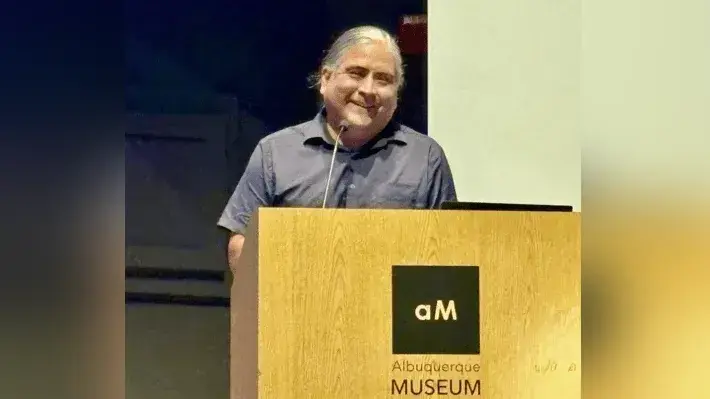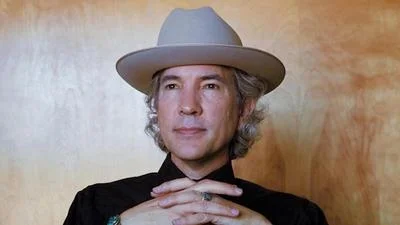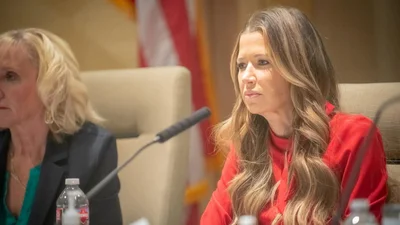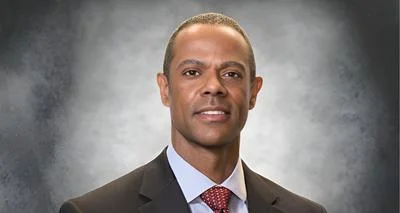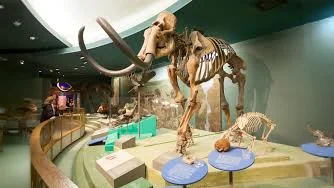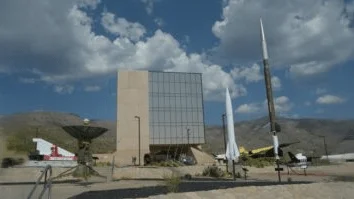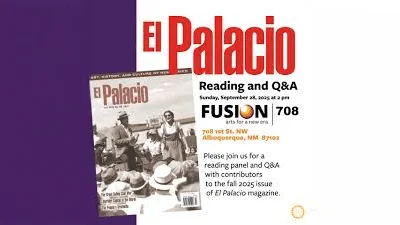To call composer and artist Raven Chacon a “creative” is an understatement. He is an inventive, imaginative original—an artist crafting visual, musical, and written revelations that hold audiences in a state of calm, questioning, and controlled chaos.
Over the past week, I attended two events connected to Chacon.
The first was the Albuquerque premiere of his composition American Ledger (No. 1). In a packed lobby at the Albuquerque Museum, musicians performed with unconventional instruments—a chainsaw, a hatchet, coins poured into a bucket—while conductor David Felberg, guided by a large graphic score, signaled cues with hand motions. Scattered throughout the space, performers from the ensemble Chatter played vibes, percussion, bass clarinet, violin, saxophone, and trombone, interjecting at key moments during the 20-minute work. Whether during group whistling or the silent lighting of a match, the audience was captivated, leaning in to grasp the scope and sequence of the piece. It was an unforgettable ride.
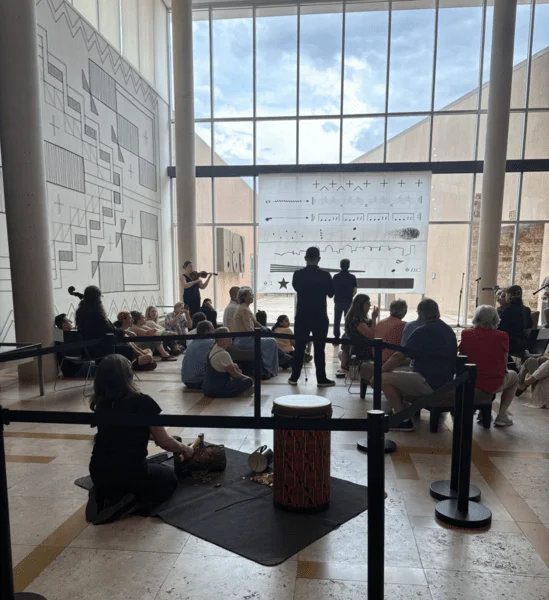 Performance of “American Ledger (No.1) at the Albuquerque Museum. | Brian C. Nixon
Performance of “American Ledger (No.1) at the Albuquerque Museum. | Brian C. Nixon
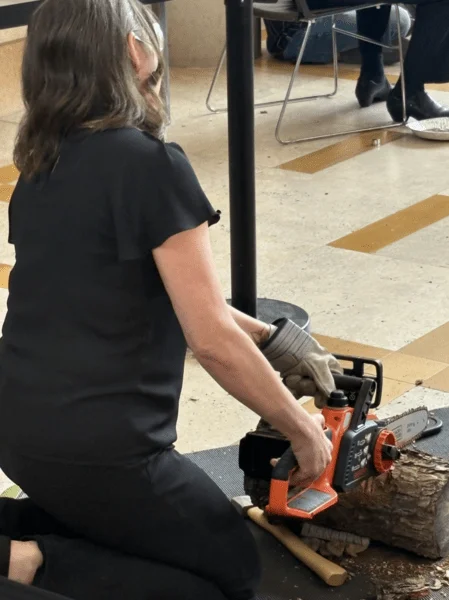 Chainsaw during “American Ledger (No. 1) by Raven Chacon. | Brian C. Nixon
Chainsaw during “American Ledger (No. 1) by Raven Chacon. | Brian C. Nixon
The second event was Chacon’s discussion of his forthcoming city-wide composition, Tiguex. The work takes its name from a Tiwa word meaning “the valley between the Sandia Mountains and Isleta Pueblo”—the land where Albuquerque sits today. Sponsored by Tamarind and held at the Albuquerque Museum, the event traced Chacon’s journey from earlier projects (Repellent Fence, Chorale, Voiceless Mass, Wandering Breeze, and others) to this ambitious new undertaking.
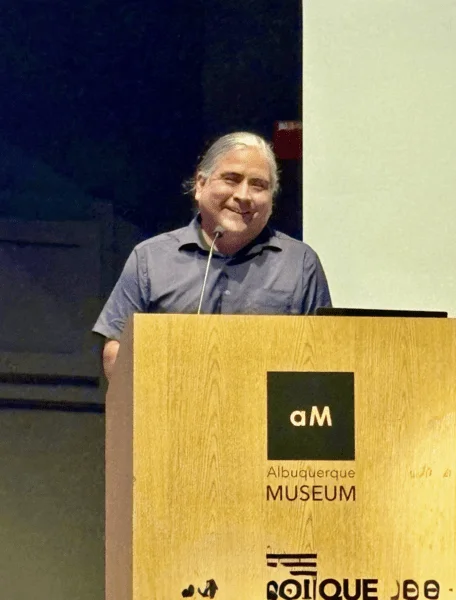 Raven Chacon discussing his composition Tiguex. | Brian C. Nixon
Raven Chacon discussing his composition Tiguex. | Brian C. Nixon
Tiguex is what Chacon calls a “super composition”—a work extending across the city, rooted in places that have shaped his life and artistic sensibility. He cites three influences: first, his fascination with the “frequencies of cities’ radio,” switching stations obsessively to hear multiple broadcasts at once; second, his years as a composition student at the University of New Mexico, spending “exactly 1,000 hours in the fine arts library studying music scores, searching for a world beyond this desert”; and third, his experiences organizing concerts. “Tiguex,” he explains, “is a reflection of this learning.”
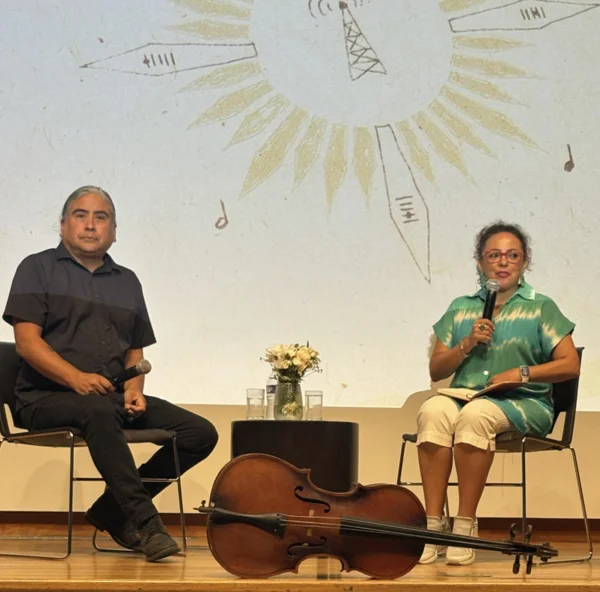 Raven Chacon and Dr. Ana Alonso-Minutti. | Brian C. Nixon
Raven Chacon and Dr. Ana Alonso-Minutti. | Brian C. Nixon
In addition to its performances, Tiguex exists as a graphic score in the form of a map, guiding musicians and audiences through a “composition of compositions,” dependent on a “community of overlapping communities.” Chacon outlined its 20 movements, including Prayer, The Teaching of the Wind, Downhill Procession, Volcano Choir, Glass Graveyard, Cantata, Reverse Prayer, and Epilogue.
These works will be performed at diverse sites—volcanoes, trails, parks, downtown streets, mountains, railroads, and the Petroglyphs—transforming Albuquerque into a living, breathing score. For Chacon, Tiguex is a work of “remembering,” a place for gathering and reflection where, as he notes, “every note should be played with humility.”
Tiguex will premiere across the city on September 27, 2025, and will also be broadcast on KUNM (89.9 FM), hosted by Chacon’s longtime piano teacher, Dawn Peters.
For more information, visit tiguex.com. For details on Tamarind’s limited-edition book celebrating the project, see Tamarind’s site.
Brian C. Nixon, Ph.D., is Chief Academic Officer and professor at Veritas International University in Albuquerque. As a writer, musician, and artist, his interests surround the philosophical transcendentals: truth, beauty, and goodness. You can contact Brian via his Bandcamp email address: https://briancharlesnixon.bandcamp.com
